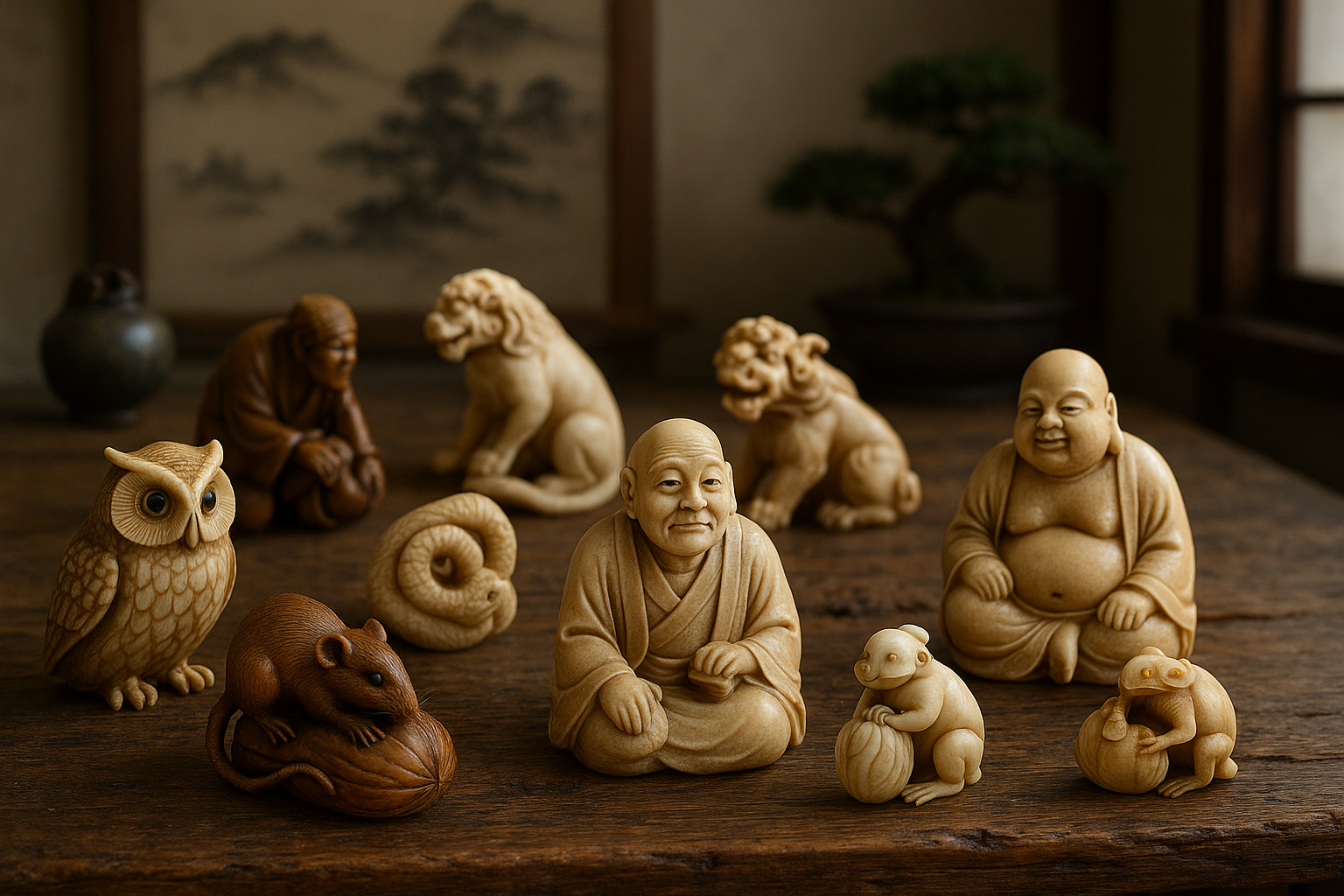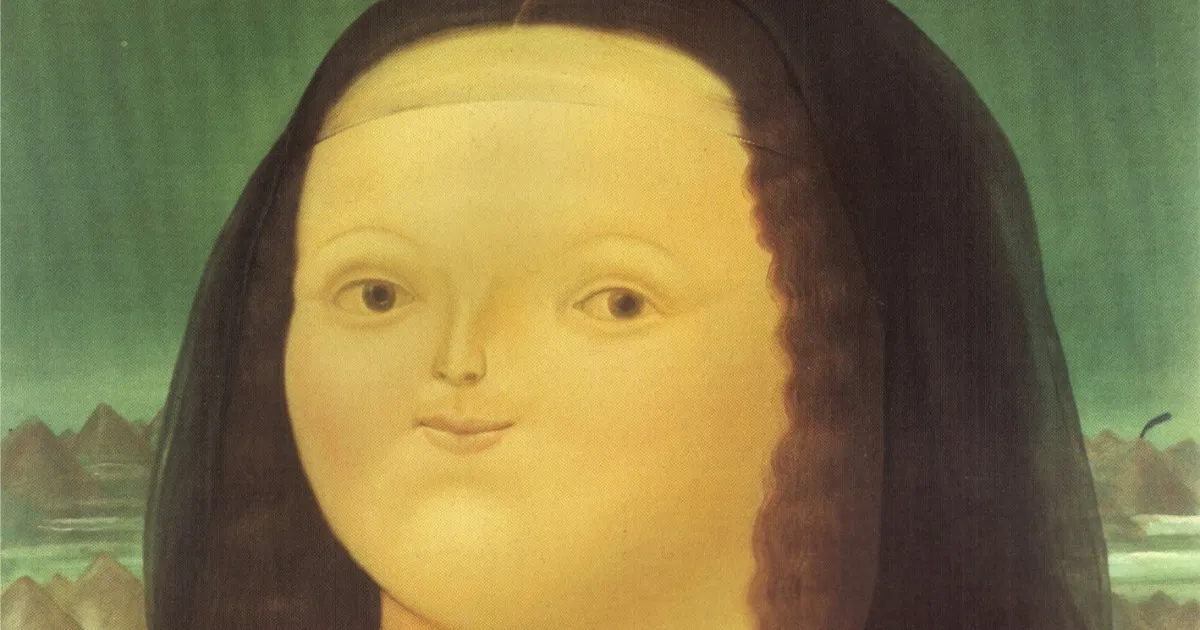In the realm of Japanese artistry, where every brushstroke and carving is a testament to centuries of tradition, one might be surprised to discover that some of the most captivating pieces are no larger than a walnut. Welcome to the intricate world of netsuke: these tiny treasures, often overlooked, hold a significance and impact that belies their size. 🎎
Netsuke, meticulously crafted miniature sculptures, have been an integral part of Japanese culture since the Edo period. Originally serving as toggles to secure personal belongings, these diminutive objects evolved into exquisite works of art that reflect the rich tapestry of Japanese history, mythology, and everyday life. But what makes these small carvings so compelling? Why do collectors and historians alike hold them in such high regard?
At first glance, a netsuke might seem like just a beautifully carved ornament. However, delve a little deeper, and you’ll uncover a world rich with symbolism and storytelling. From the mischievous tanuki to the revered Daruma, each piece tells a story, offering a glimpse into the beliefs, values, and humor of a bygone era. The art of netsuke carving is not merely about aesthetics; it’s about encapsulating an entire narrative within a small, tangible form. This ability to convey complex ideas through simple objects is what makes netsuke endlessly fascinating and eternally relevant.
In this article, we’ll embark on a journey through the history and evolution of netsuke. 🐉 We’ll explore their origins and how their purpose transformed from mere utility to objects of artistic and cultural significance. We’ll also delve into the materials and techniques that master craftsmen have used over the centuries, highlighting the innovation and skill that goes into creating each piece. Furthermore, we’ll examine the different themes and motifs commonly found in netsuke, each offering insights into Japanese society and folklore.
As we navigate through this intricate world, we’ll also consider the modern-day relevance of netsuke. In a world increasingly dominated by mass production, the handmade, personalized nature of netsuke stands out as a beacon of artistry and individuality. We’ll discuss the resurgence of interest in these miniatures among collectors and museums worldwide, and why they continue to captivate audiences with their charm and mystery.
Join us as we uncover the stories and secrets behind these small wonders. Whether you’re a seasoned collector, a history enthusiast, or simply someone with a curiosity for the unique, the world of netsuke promises to surprise and delight. Let’s dive into the enchanting realm where small truly is beautiful, and discover why these tiny treasures continue to make a big impact. 🌸
# Discover the Intricate World of Japanese Netsuke: Tiny Treasures with Big Impact
## The Origins and Historical Significance of Netsuke
### Unraveling the Early History
The fascinating history of netsuke begins in the Edo period of Japan (1603-1868), a time when the country was under the rule of the Tokugawa shogunate. During this era, the Japanese adopted a traditional style of dress that did not include pockets. Instead, they used small pouches or containers called “sagemono,” which were suspended from the obi (sash) with the help of a small toggle known as a netsuke. These tiny objects evolved into a unique form of art and craftsmanship, gaining immense popularity and significance over time.
Netsuke were initially functional objects, but they quickly became a symbol of status and a canvas for artisans to showcase their skills. The elaborate designs and the meticulous attention to detail in each piece reflected the individuality and personality of the wearer. As a result, netsuke became highly collectible, not only in Japan but also among European collectors in the 19th and 20th centuries.
Throughout history, netsuke have been crafted from a variety of materials, including ivory, wood, metal, and even ceramics. The choice of material often depended on the artisan’s expertise and the specific design they envisioned. Ivory, in particular, was favored for its smooth texture and the ability to carve intricate details. However, with modern regulations on ivory trade, contemporary netsuke artists have shifted to more sustainable materials.
### The Role of Netsuke in Japanese Culture
Netsuke played a crucial role in Japanese culture, not only as functional objects but also as symbols of social identity. In the rigid class structure of Edo Japan, netsuke allowed individuals to express their creativity and taste, reflecting their social standing, profession, and even personal interests. For instance, a samurai might choose a netsuke depicting a fierce animal to symbolize bravery and strength, while a merchant might opt for a design featuring auspicious symbols to attract good fortune.
The craftsmanship of netsuke also reflects the deep connection between art and spirituality in Japanese culture. Many netsuke designs are inspired by folklore, mythology, and religious themes, capturing the essence of Japan’s rich cultural heritage. This spiritual dimension adds another layer of significance to these miniature masterpieces, making them more than just decorative objects.
Moreover, netsuke have transcended their original function and have become an integral part of Japanese art collections. Museums around the world house extensive collections of netsuke, showcasing the evolution of this unique art form over centuries. These collections provide valuable insights into the cultural exchanges between Japan and the Western world, as European collectors played a pivotal role in preserving and promoting netsuke art outside Japan.
### Evolution of Styles and Techniques
As netsuke evolved, so did the styles and techniques used in their creation. The early designs were relatively simple, focusing on functionality and ease of use. However, as the popularity of netsuke grew, artisans began experimenting with more complex and intricate designs, pushing the boundaries of what was possible in such a small form.
The introduction of different carving techniques and materials led to the development of distinct styles, such as “katabori” (sculptural carving) and “manju” (flat, disc-like shapes). These styles allowed artists to explore new themes and motifs, ranging from naturalistic depictions of animals and plants to abstract geometric patterns. The diversity of styles contributed to the rich tapestry of netsuke art, offering collectors a wide array of choices to suit their tastes.
The table below highlights some of the common styles and materials used in netsuke creation:
| Style | Description | Common Materials |
|---|---|---|
| Katabori | Sculptural, three-dimensional carvings | Ivory, wood, metal |
| Manju | Flat, disc-like shape | Ivory, lacquer |
| Sashi | Elongated, cylindrical form | Wood, ivory |
| Ryusa | Openwork carving with intricate designs | Ivory, bone |
Netsuke artists continue to innovate, blending traditional techniques with modern aesthetics to create pieces that resonate with contemporary audiences. This ongoing evolution ensures that netsuke remains a vibrant and dynamic art form, preserving its relevance in the modern world.
## The Artistry Behind Netsuke: Crafting Miniature Masterpieces
### Mastering the Craft: Techniques and Tools
The creation of a netsuke requires a high level of skill and precision, as each piece is meticulously carved to achieve the desired design. Artisans, known as “netsuke-shi,” dedicate years to mastering their craft, learning the intricacies of various materials and carving techniques. The process begins with selecting the appropriate material, which can influence the final outcome in terms of texture, color, and durability.
Once the material is chosen, the artisan sketches the design, often drawing inspiration from traditional motifs or personal experiences. The carving process involves using a variety of specialized tools, such as chisels, knives, and files, to meticulously shape the material. The level of detail in a netsuke is astounding, with some pieces featuring intricate patterns and delicate features that require immense concentration and steady hands.
The finishing touches of a netsuke involve polishing and sometimes coloring or staining the piece to enhance its appearance. In some cases, additional embellishments, such as inlays of metal or gemstones, are added to create a more striking effect. The entire process can take weeks or even months, depending on the complexity of the design and the skill of the artisan.
### The Role of Creativity and Innovation
While traditional themes and techniques remain popular, contemporary netsuke artists are constantly pushing the boundaries of creativity and innovation. They experiment with unconventional materials, such as acrylics and modern composites, and incorporate new themes that reflect current societal trends and personal narratives. This fusion of tradition and modernity allows netsuke to remain relevant in a rapidly changing world, attracting a new generation of collectors and enthusiasts.
Contemporary netsuke often feature bold and imaginative designs, with artists exploring abstract forms and surrealistic imagery. This departure from conventional motifs showcases the versatility and adaptability of netsuke as an art form, highlighting the limitless potential for creativity and expression. Collectors and enthusiasts are drawn to these unique pieces, which offer a fresh perspective on a centuries-old tradition.
For a glimpse into the modern world of netsuke, watch the video below, which highlights the work of contemporary netsuke artists and their innovative approaches to this traditional craft.
[The Art of Netsuke – Japanology Plus](https://www.youtube.com/watch?v=_7tXW4n8H5k) – NHK World-Japan
### Preserving the Tradition: Challenges and Opportunities
Despite the enduring appeal of netsuke, the art form faces several challenges in the modern era. The dwindling number of skilled artisans, coupled with the limited availability of traditional materials like ivory, poses significant obstacles to the preservation of netsuke craftsmanship. However, these challenges also present opportunities for innovation and adaptation.
Efforts to promote and preserve netsuke include educational initiatives aimed at training new generations of artists and raising awareness about the cultural significance of netsuke. Exhibitions and workshops around the world provide platforms for artisans to showcase their work and engage with international audiences. Additionally, collaborations between traditional artists and contemporary designers have sparked renewed interest in netsuke, bridging the gap between the past and the present.
Organizations and museums dedicated to the study and preservation of netsuke play a vital role in safeguarding this unique art form. They facilitate research, documentation, and conservation efforts, ensuring that future generations can continue to appreciate the beauty and craftsmanship of netsuke.
## Collecting Netsuke: A Journey Through Art and History
### The Appeal of Netsuke Collecting
Collecting netsuke offers a unique opportunity to explore the intersection of art, history, and culture. Each netsuke tells a story, capturing a moment in time and reflecting the values and beliefs of the society in which it was created. For collectors, these miniature treasures are not just objects of beauty but also windows into the past, offering insights into the traditions and customs of Edo-period Japan.
The appeal of netsuke collecting lies in the diversity and variety of pieces available. From traditional designs featuring mythical creatures and religious symbols to contemporary interpretations with modern themes, the range of netsuke available caters to a wide array of tastes and preferences. This diversity allows collectors to curate collections that reflect their personal interests and passions, making each collection unique and meaningful.
### Understanding the Market: Value and Authenticity
The value of a netsuke is determined by several factors, including its age, rarity, craftsmanship, and condition. Antique netsuke, particularly those created by renowned artisans or featuring rare designs, can command high prices in the market. However, collectors must exercise caution, as the market is rife with reproductions and forgeries.
Authenticity is a crucial consideration for netsuke collectors, as genuine pieces hold both artistic and historical value. To ensure authenticity, collectors often seek pieces with provenance, documented histories that trace the ownership and origins of the netsuke. Additionally, consulting with experts and conducting thorough research can help collectors identify genuine pieces and avoid potential pitfalls.
The table below provides a comparison of factors influencing the value of netsuke:
| Factor | Impact on Value |
|---|---|
| Age | Older pieces, especially from the Edo period, are generally more valuable. |
| Rarity | Unique designs or pieces by renowned artists increase value. |
| Craftsmanship | Intricate details and high-quality carving enhance value. |
| Condition | Well-preserved pieces without damage are more desirable. |
### Building a Collection: Tips and Considerations
For those interested in starting a netsuke collection, there are several key considerations to keep in mind. First and foremost, understanding one’s own interests and preferences is essential, as this will guide the selection of pieces and help create a cohesive collection. Researching the history and significance of different netsuke designs can also enhance the collecting experience, providing context and depth to each acquisition.
Building relationships with reputable dealers, auction houses, and fellow collectors can provide valuable insights and opportunities for acquiring new pieces. Attending exhibitions and participating in collector communities can also facilitate knowledge-sharing and foster connections with others who share a passion for netsuke.
It’s important to approach netsuke collecting with an appreciation for the artistry and cultural significance of each piece, rather than solely focusing on potential financial returns. The true value of a netsuke collection lies in its ability to inspire and educate, offering a tangible link to a rich and vibrant cultural heritage.
## The Cultural Legacy of Netsuke: Beyond the Obvious
### Netsuke as a Symbol of Cross-Cultural Exchange
The story of netsuke is not limited to Japan; it is a testament to the power of cross-cultural exchange. In the late 19th and early 20th centuries, Western collectors became enamored with Japanese art, leading to a surge in interest in netsuke. This fascination with Japanese culture coincided with the opening of Japan to the West, resulting in a vibrant exchange of artistic ideas and influences.
Netsuke played a pivotal role in this cultural exchange, serving as ambassadors of Japanese art and craftsmanship. As these miniature masterpieces found their way into European and American collections, they inspired artists and designers to incorporate Japanese aesthetics into their work, sparking movements such as Japonisme in the late 19th century.
### The Influence of Netsuke on Western Art and Design
The impact of netsuke on Western art and design can be seen in various forms, from decorative arts to fashion and architecture. The intricate details and naturalistic themes of netsuke resonated with Western artists, who sought to emulate the delicate beauty and craftsmanship of these objects in their own work. This influence is particularly evident in the Art Nouveau movement, which embraced organic forms and intricate designs reminiscent of traditional netsuke motifs.
In addition to inspiring individual artists, netsuke also contributed to a broader appreciation for Japanese culture in the West. Exhibitions of Japanese art and artifacts, including netsuke, introduced Western audiences to new artistic traditions and philosophies, fostering a deeper understanding and appreciation of Japan’s rich cultural heritage.
### Preserving the Cultural Heritage of Netsuke
As interest in netsuke continues to grow, efforts to preserve and promote this cultural heritage are more important than ever. Museums and cultural institutions play a crucial role in safeguarding netsuke collections, ensuring that future generations can learn from and appreciate these remarkable objects. Educational programs and exhibitions provide opportunities for the public to engage with netsuke and explore their cultural significance.
Moreover, contemporary artists and collectors are actively contributing to the preservation of netsuke by keeping the tradition alive and introducing new audiences to this unique art form. Through innovation and collaboration, they ensure that netsuke remains a vibrant and relevant part of the cultural landscape, offering a timeless connection to the past while embracing the possibilities of the future.
In conclusion, the intricate world of Japanese netsuke is a testament to the enduring appeal of artistry and craftsmanship. These tiny treasures, with their rich history and cultural significance, continue to captivate collectors and enthusiasts worldwide. As we delve deeper into the world of netsuke, we uncover stories of tradition, innovation, and cross-cultural exchange, enriching our understanding of art and culture in ways that resonate far beyond their diminutive size.

Conclusion
Conclusion
As we draw our exploration of the enchanting world of Japanese Netsuke to a close, it becomes evident that these miniature masterpieces are far more than mere ornaments. Throughout this article, we’ve delved into the rich history and cultural significance of Netsuke, unraveling their evolution from practical toggles in traditional Japanese attire to coveted collectibles that hold a mirror to the country’s artistic heritage. 🏯
We began by tracing the origins of Netsuke, a journey that took us back to the Edo period, a time when these tiny sculptures played an essential role in daily life. Their functional use, attached to the cords of inro boxes, highlighted the innovative ways the Japanese combined utility with aesthetic appeal. This historical context is crucial in understanding why Netsuke have endured as cultural artifacts, capturing the imagination of collectors and art enthusiasts worldwide.
Our exploration then led us to examine the intricate craftsmanship that defines each piece. The skill and dedication of the artisans are evident in the painstaking detail found in materials ranging from ivory and wood to rare and exotic materials. Each Netsuke tells its own story, often depicting folklore, mythology, and scenes from everyday life, making them not just art pieces but storytellers of their own. 🎨
Moreover, we touched upon the resurgence of interest in Netsuke during the Meiji period, a time when Japan opened its doors to the West, creating a cross-cultural exchange that further heightened the global appreciation for these objects. This period marked the transition of Netsuke from practical items to collectibles cherished for their artistic and historical value.
The contemporary relevance of Netsuke cannot be overstated. Today, they serve as a testament to the enduring allure of Japanese art and culture, captivating new generations of collectors and artists alike. As symbols of Japan’s artistic ingenuity, they continue to inspire creativity and innovation, bridging the past with the present in a unique and captivating way.
In discussing these tiny treasures, it is clear that the impact of Netsuke extends beyond their size. They represent a convergence of history, art, and culture, offering insights into a society’s values, beliefs, and aesthetic sensibilities. Whether you’re a seasoned collector or a curious newcomer, the world of Netsuke invites you to explore and appreciate the intricacies of Japanese craftsmanship.
In closing, I encourage you to reflect on the themes we’ve explored and consider the ways in which Netsuke can influence and enrich your own understanding of art and culture. Perhaps you might feel inspired to begin your own collection, attend an exhibition, or delve deeper into the fascinating history of these miniature marvels. 📚
I invite you to share your thoughts and insights in the comments section below. How has this exploration of Netsuke impacted your perception of Japanese art? What aspects of Netsuke do you find most intriguing? Your perspectives are invaluable, and I would love to hear from you.
If you found this article insightful, consider sharing it with friends and fellow art enthusiasts. Together, we can spread appreciation for the rich tapestry of Japanese culture and the remarkable world of Netsuke.
For further reading and to continue your journey into the world of Japanese art, here are some active resources:
- The Met’s Timeline of Art History – Japanese Art
- The British Museum – Netsuke Collection
- Japan Guide – Traditional Japanese Culture
Thank you for joining me on this captivating journey through the world of Japanese Netsuke. Let us celebrate these tiny treasures and the big impact they continue to have on art and culture. 🌟
Toni Santos is a visual chronicler and historical researcher who explores the lost language of healing through forgotten instruments and ancient medical design. With a delicate blend of curiosity and reverence, Toni uncovers the mysterious tools once used in temples, apothecaries, and folk practices—objects that echo a time when healing was both art and ritual.
Rooted in a fascination with the intersection of medicine, myth, and craftsmanship, his work traces how past civilizations understood the body, spirit, and cosmos through tools now obscured by time. From vibrational tuning forks and herbal infusion vessels to symbolic scalpels carved with protective motifs, Toni’s visual storytelling gives new life to the technologies that once held deep cultural and curative power.
With a background in historical illustration and material culture, Toni reconstructs these instruments with artistic precision—offering not just images, but narratives that reveal the beliefs, fears, and hopes embedded in the tools of care.
As the visionary behind Vizovex, Toni shares curated archives, interpretive essays, and artifact-inspired artworks that help audiences reconnect with the ancestral roots of healing and the poetic devices once used to restore balance.
His work is a tribute to:
The craftsmanship of early healing technologies
The spiritual symbolism behind medical instruments
The intimate connection between body, tool, and ritual
Whether you’re an enthusiast of forgotten sciences, a student of holistic traditions, or a seeker of the obscure, Toni welcomes you into a world where healing was sacred, and every tool told a story—one wound, one charm, one cure at a time.





